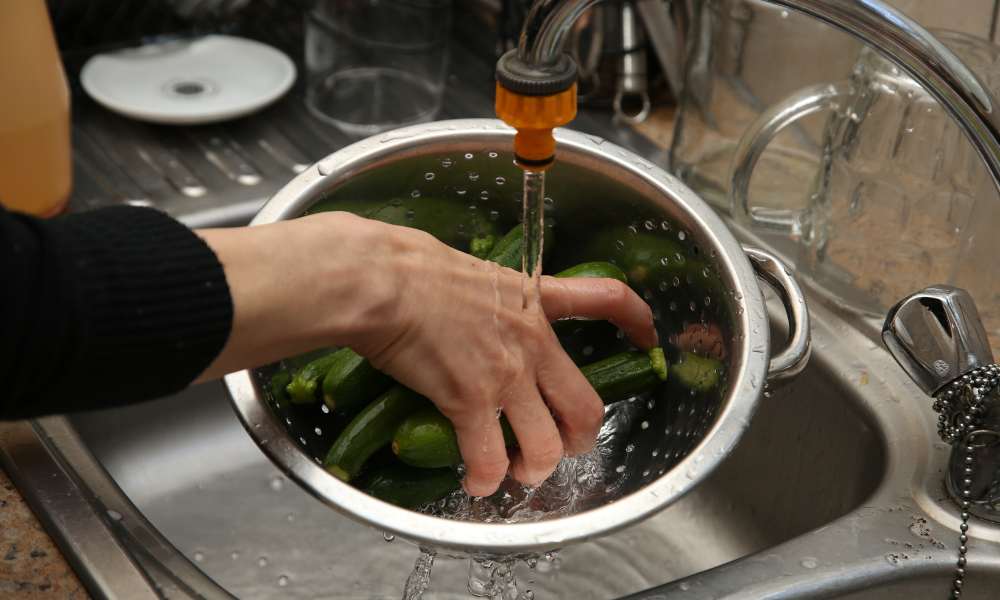Using a colander is a fundamental skill in any kitchen, whether you’re a novice cook or an experienced chef. This simple yet versatile kitchen tool is designed to strain liquids from solids, making it indispensable for various cooking tasks such as draining pasta, rinsing vegetables, or washing fruits. Understanding how to effectively utilize a colander not only streamlines your cooking process but also ensures the best results in your culinary endeavors. In this guide, we will explore the basics of using a colander, including proper techniques and practical tips to make the most out of this essential kitchen utensil.
What Is A Colander?
A colander is a kitchen utensil typically made of metal, plastic, or silicone, featuring a perforated bowl with handles. Its primary purpose is to strain liquids from solids, allowing water or other liquids to drain away while retaining the solid contents. It come in various sizes and shapes, from small handheld ones for rinsing berries to large ones for draining pasta or vegetables. Their design facilitates efficient drainage without losing the desired ingredients, making them indispensable in culinary tasks that involve separating liquids from solids.
Importance Of Colanders In The Kitchen
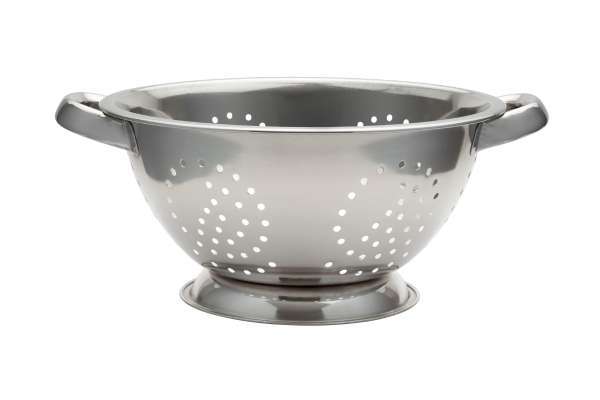
Colanders play a crucial role in the kitchen, offering several benefits that aid in food preparation and cooking. Firstly, they provide a convenient means to rinse fruits, vegetables, and other ingredients, ensuring they are clean and ready for use in recipes. Additionally, colanders are essential for draining cooked pasta, rice, or grains, removing excess water to achieve the desired consistency and preventing dishes from becoming soggy. Moreover, colanders facilitate the blanching process by quickly transferring boiled vegetables into ice water, halting the cooking process and preserving their vibrant color and texture. Overall, the versatility and efficiency of colanders make them indispensable tools in any kitchen, enabling cooks to achieve optimal results in their culinary endeavors.
Types Of Colanders
1. Traditional Colanders

Traditional colanders are the quintessential kitchen tool, featuring a bowl-shaped design with perforations or holes for draining liquids. They typically come with handles on either side for easy gripping and maneuvering. Traditional colanders are available in various materials such as stainless steel, plastic, or silicone, each offering its own set of advantages. Stainless steel colanders are durable and resistant to corrosion, making them suitable for heavy-duty use. Plastic colanders, on the other hand, are lightweight and often more affordable, making them a popular choice for everyday kitchen tasks. Silicone colanders are flexible and collapsible, allowing for convenient storage in small spaces. Traditional colanders are versatile and suitable for a wide range of kitchen tasks, including rinsing fruits and vegetables, draining pasta, or straining soups and stocks.
2. Over-The-Sink Colanders
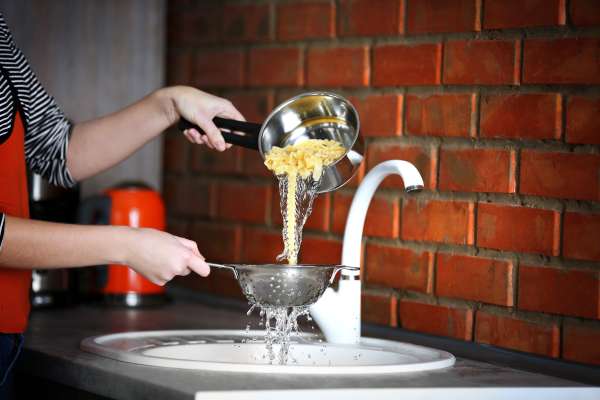
Over-the-sink colanders are innovative kitchen gadgets designed to maximize space and efficiency. These colanders typically feature extendable arms or handles that can be placed over the edges of a sink, allowing for hands-free operation and freeing up valuable countertop space. Over-the-sink colanders come in various shapes and sizes, ranging from small collapsible models to larger ones with built-in handles. They are often made of silicone or plastic, which are flexible and easy to clean. Over-the-sink colanders are particularly useful for draining large quantities of pasta or washing bulky vegetables, as they provide ample space for water to drain away without creating a mess on the countertop. Additionally, their hands-free design allows for multitasking in the kitchen, making them a convenient and practical tool for any cook.
3. Collapsible Colanders
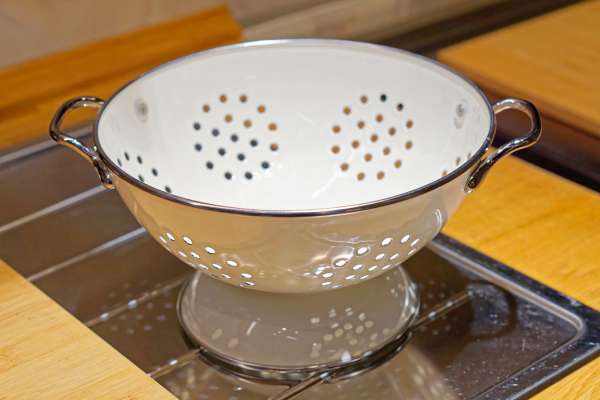
Collapsible colanders offer a space-saving solution for kitchens with limited storage space. These colanders are designed to collapse flat when not in use, making them easy to store in drawers or cabinets. They typically feature a flexible and durable material such as silicone, which allows them to expand and collapse effortlessly. Collapsible colanders often come with sturdy handles for easy gripping and maneuvering. Despite their collapsible design, they maintain the functionality of traditional Store colanders, featuring perforations or holes for efficient draining. Collapsible colanders are ideal for small kitchens, RVs, or camping trips where space is at a premium. They are versatile tools that can be used for rinsing fruits and vegetables, draining pasta, or straining liquids with ease.
4. Silicone Colanders
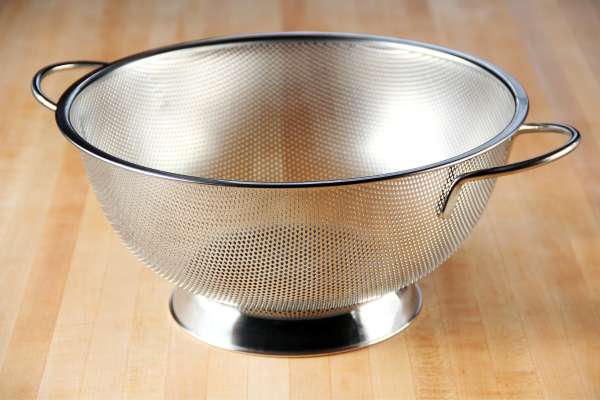
Silicone colanders are a popular choice for their flexibility, durability, and ease of use. These colanders are made entirely of silicone, a food-grade material that is heat-resistant, non-toxic, and easy to clean. Silicone colanders come in various sizes and shapes, from small handheld models to large ones that fit over the sink. They often feature a collapsible design, allowing for compact storage when not in use. Silicone colanders are lightweight and flexible, making them easy to handle and maneuver. They are also dishwasher safe, making cleanup a breeze. Silicone colanders are versatile tools that can withstand high temperatures, making them suitable for draining hot pasta or blanching vegetables. Their non-stick surface prevents food from sticking, ensuring easy release and cleanup. Overall, silicone colanders are a convenient and practical addition to any kitchen, offering efficient draining and easy cleanup for a variety of culinary tasks.
Choosing The Right Colander
Selecting the appropriate colander for your kitchen needs involves considering several factors to ensure efficiency and convenience in your culinary tasks. Here are some key aspects to consider when choosing the right colander:
- Material: Colanders are commonly made from stainless steel, plastic, silicone, or mesh. Stainless steel colanders are durable and suitable for heavy-duty use, while plastic colanders are lightweight and affordable. Silicone colanders offer flexibility and are easy to clean, while mesh colanders are ideal for fine straining tasks such as sifting flour or draining quinoa.
- Size and Capacity: Consider the size of the colanders based on the quantity of food you typically prepare. Larger colanders are suitable for draining pasta or washing vegetables in bulk, while smaller ones are ideal for rinsing berries or straining sauces.
- Design: Colanders come in various designs, including bowl-shaped, over-the-sink, and collapsible. Choose a design that fits your kitchen space and usage preferences. Over-the-sink colanders save countertop space and allow for hands-free operation, while collapsible colanders are space-saving and convenient for storage.
- Handles: Opt for a colanders with sturdy handles for easy gripping and maneuvering, especially when dealing with hot liquids or large quantities of food. Ensure that the handles are securely attached to the colander to prevent accidents during use.
- Perforations: Pay attention to the size and pattern of the perforations or holes in the colander. Larger perforations are suitable for draining liquids quickly, while smaller ones are ideal for fine straining tasks. Mesh colanders with fine perforations are perfect for tasks like draining pasta or blanching vegetables.
By considering these factors, you can choose the right colander that meets your specific kitchen needs and enhances your cooking experience with efficiency and convenience.
How To Use A Colander Properly
1. Preparing The Colander
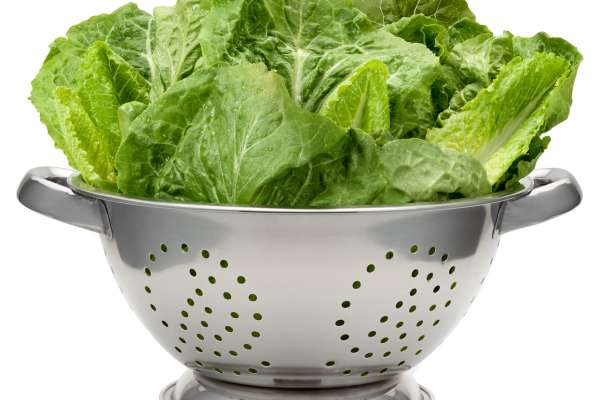
Before using the colander, ensure that it is clean and free from any debris or residue. Wash the colander with soap and water, and rinse it thoroughly to remove any soap residue. Once clean, place the colander in or over a sink, ensuring that it is stable and secure. If using an over-the-sink colander, extend the arms or handles over the edges of the sink to secure it in place.
2. Draining Liquids
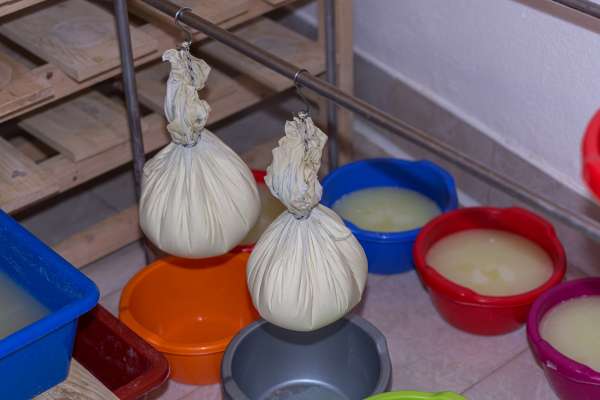
When draining liquids using a colander, follow these steps for optimal results:
a. Selecting The Correct Size: Choose a colander that comfortably accommodates the quantity of food you are draining. Ensure that the colander is large enough to hold the food without overcrowding, which can impede proper drainage.
b. Adding The Food: Place the food you wish to drain into the colander. For example, if draining pasta, carefully transfer the cooked pasta into the colander using a slotted spoon or tongs. Be cautious when handling hot foods to avoid burns.
c. Allowing Drainage: Hold the colander securely with one hand, using the handles if available, and tilt it slightly to allow the excess liquid to drain away. If using an over-the-sink colander, you can let gravity assist in the draining process by positioning it at a slight angle over the sink.
d. Shaking or Tossing: To aid in draining, gently shake or toss the contents of the colander to help remove any excess liquid. Be careful not to shake too vigorously, especially with delicate foods, to avoid damaging them or causing spills.
e. Collecting Drained Liquid: Place a bowl or container beneath the colander to catch the drained liquid if you wish to save it for later use, such as pasta cooking water for sauces.
f. Finishing Up: Once the food has drained sufficiently, transfer it to a serving dish or directly to the cooking pot if further preparation is needed. Clean the colander promptly after use to prevent food residue from drying and becoming difficult to remove.
By following these steps, you can use a colander properly to effectively drain liquids from foods, ensuring optimal results in your culinary endeavors.
3. Washing Fruits And Vegetables
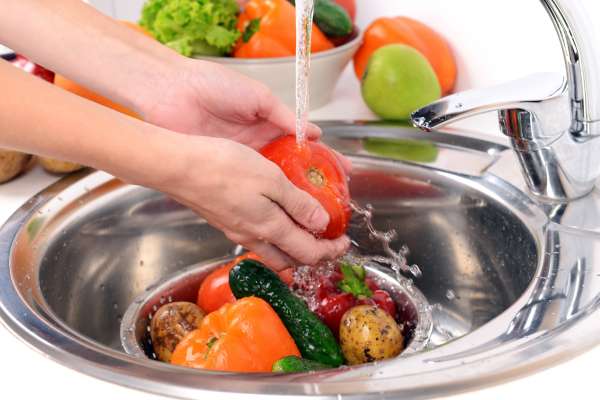
Colanders are invaluable tools for rinsing and washing fruits and vegetables, ensuring they are clean and ready for consumption. Follow these steps for washing fruits and vegetables using a colander:
a. Preparation: Place the colander in or over a clean sink and ensure it is stable and secure. If using a handheld colander, hold it securely with one hand while washing the fruits or vegetables with the other.
b. Sorting: Sort the fruits and vegetables as needed, removing any debris, dirt, or damaged parts.
c. Rinsing: Place the fruits or vegetables into the colander and rinse them thoroughly under cold, running water. Use your hands to gently rub the surface of the produce to remove any dirt or residues.
d. Draining: Tilt the colander slightly to allow the excess water to drain away. You can also gently shake the colander to help remove excess water from the produce.
e. Inspecting: After rinsing, inspect the fruits and vegetables for any remaining dirt or debris. If necessary, repeat the rinsing process until the produce is clean.
f. Drying (Optional): Once washed, you can pat dry the fruits and vegetables with a clean towel or let them air dry before storing or using them in recipes.
Conclusion
Mastering the proper use of a colander enhances efficiency and convenience in various kitchen tasks, including draining liquids, washing fruits and vegetables, and preparing ingredients for cooking. By following the outlined steps, you can use a colander effectively to ensure optimal results in your culinary endeavors. Whether you’re draining pasta, rinsing produce, or straining sauces, a colander is an indispensable tool that simplifies food preparation and contributes to delicious and nutritious meals. Incorporate these techniques into your cooking routine to make the most out of your colander and elevate your culinary skills.
